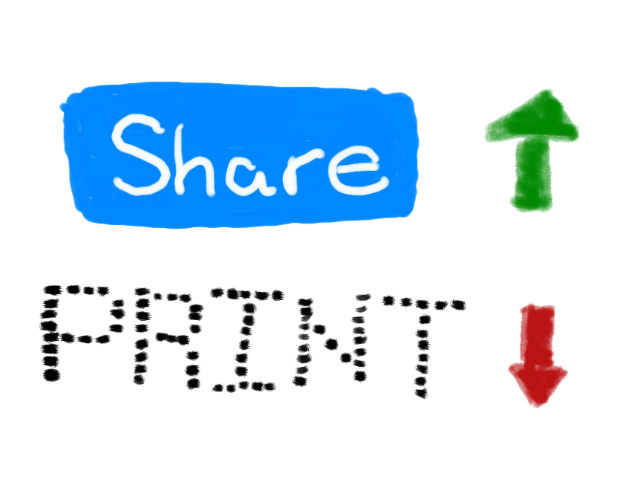Use Google Apps to reduce printing expenses for your organization

Since the early days of computing, people have dreamed of a "paperless office" -- a world where we eliminate paper in favor of digital documents.
A digital document costs less to store, share, and search than paper. A Google Doc, for example, costs almost nothing to store, and we can share it with anyone connected to the internet. We measure a search through our digital documents in milliseconds, compared to minutes -- or days -- that we might spend sorting paper files.
But paper remains with us. Look around your workspace. In addition to the device you're reading this on -- your phone, a tablet, a laptop, or desktop -- you likely see paper.
For their 2002 book, "The Myth of the Paperless Office," Abigail Sellen and Richard Harper studied how people use paper in work settings. They found that paper's many "affordances" -- the capabilities of an object -- serve practical purposes. Unlike a digital file, each piece of paper exists in space. We write on paper on a desk, file it in a folder, tape it to a printer, and distribute paper at a meeting. A paper's size, weight, and place conveys information.
A switch to Google Apps likely won't entirely eliminate paper use, but smart use of Google Apps may reduce printing expenses for your organization.
1. Reduce the number of printers
Arik Hesseldahl wrote, "Printers are usually shared by two or three employees, but boosting the employee-to-printer ratio to about 8-to-1 slows paper consumption by making printing that much less convenient" (from "The New Push to Get Rid of Paper" in 2008).
2. Enable printing from anywhere
With Google Cloud Print, you no longer need a printer on-site to print. People can print documents from any device to a cloud-connected printer anywhere. Many printers are Cloud Print capable. For printers that aren't, Lantronix's xPrintServer Cloud Print Edition ($149) device provides a plug-and-play connection to allow USB and network printers to connect to Google Cloud Print.
3. Ensure that every person has a mobile device
Provide people a mobile device and network connectivity to access documents on Google Drive. The appropriate tool will vary with the task, but there are plenty of inexpensive Android tablets, smartphones, and Chromebooks. Make sure that people can access Google Drive, Docs, Sheets, and Slides from their device. With documents online, there's less need to print.
Digital documents are more accessible than printed ones: you can resize text for easier reading or listen to a document read aloud with a text-to-voice tool.
4. Scan and share
Instead of copying and printing documents, store and share them with Google Drive. Scan existing print documents, then store them on Google Drive. One way to do this is to use a scanner, such as the Brother Google Drive Web Connect service. Another approach is to use an Android device with a camera to take a photo of a document (see my earlier article, "Scan-to-Google Drive: the scanner in your pocket"). Scanned files saved to Drive are searchable: Google performs optical character recognition on the first 10 pages of documents stored in PDF format.
5. Design digital processes
Replace paper processes with digital processes. This last step is more difficult than it appears. Many work processes remain rooted in paper-constrained thinking. A shared budget spreadsheet can replace a process that previously involved emailing, updating, and printing reports. A Google Form can replace paper surveys or polls.
Use third-party tools that work with Google Apps to handle document routing and approvals. You can add tools like Kissflow or Fujitsu RunMyProcess from the Google Apps Marketplace. Both tools add workflow management and let you use a digital process to handle routine requests, such as vacation requests or supply ordering.
Less paper: Not a myth
You can switch to digital documents to reduce costs or improve access to information -- not just to "go paperless." As Sellen and Harper say, "Going paperless for the sake of 'out with the old, in with the new' is destined to end in failure."
That said, a paperless office appears increasingly possible. Use of paper for printing, writing paper, and newsprint has declined since 2004 in Canada, Northwestern Europe, and the US, according to a study posted on a Canadian government site. The study said, "Subject to cultural factors, paper consumption increases with income but declines with income past a certain point (due to the ability of relatively wealthy consumers to switch to electronic media options)."
As we use tablets and smartphones more, a "less paper" office is likely, even if an entirely paperless one remains a myth.
Do you use Google Apps for sharing more than printing in your organization? Share your experience in the discussion thread below.

